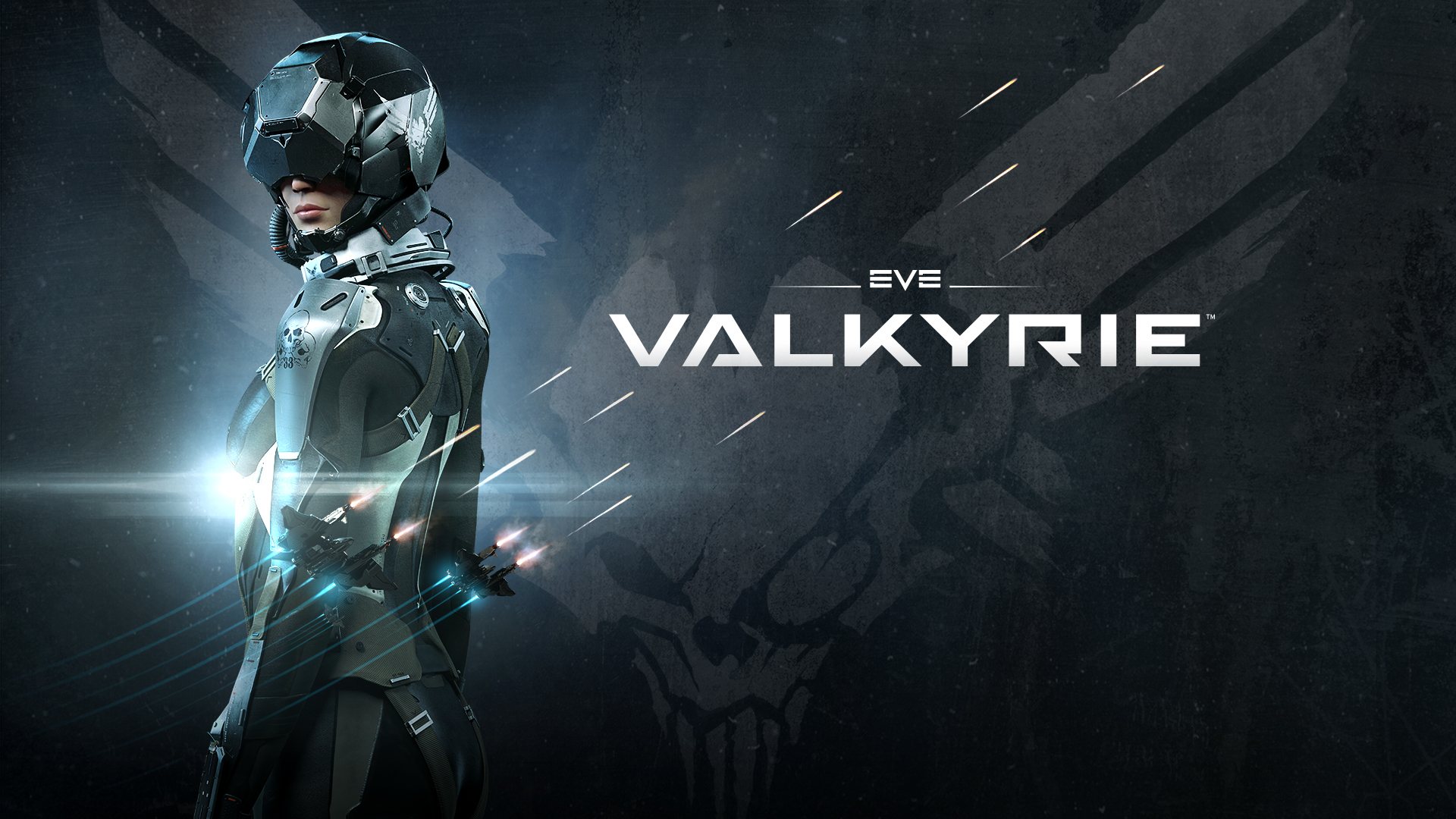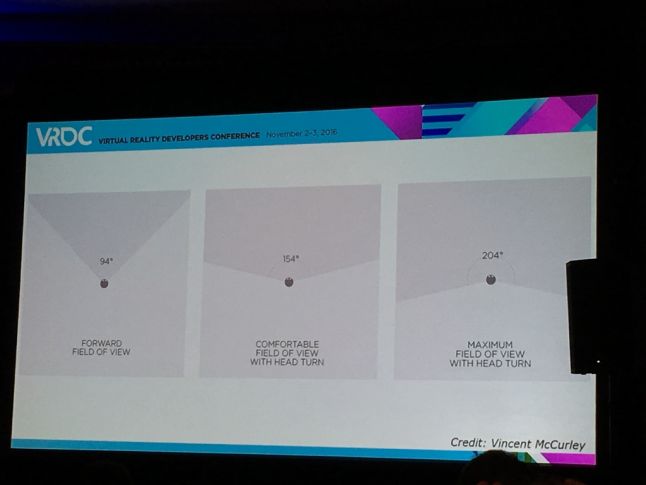BP Lessons from EVE: Valkyrie
- Transfer

Andrew Willans has been in the gaming industry for a long time. Before coming to CCP Games to work on Eve: Valkyrie, he managed to participate in projects such as Watch Dogs and Grow Home .
At VRDC in San Francisco, he talked about a game that, on the Oculus Rift, PSVR, and HTC Vive, taught him a lot.
Willans began work after the creation of the Valkyrie prototype , but before the start of full-scale development, so his story may be useful to developers seeking to turn a VR prototype into a finished game.
Andrew compares the design of VR games with the design of an amusement park: in both cases, you need to create a “holistic fantasy”. As an example, he cites the attraction “The Haunted Mansion” from Disneyland, in which, right from the moment the journey begins, the participants are immersed in an alternative reality thanks to the architecture, design of the environment and the costumes of the actors.
“When I started work, there were 28 people on the team, and we were never more than forty,” says Willans. Given the scale of Valkyrie , this is a (relatively) small size, but it guaranteed that the team would quickly adapt to new lessons and challenges. The most important discovery was that the size and scale of the VR game determines how well it can convey the feeling of flying in a fast space fighter.
“A quick flight weakens the sense of volume,” says Andrew, explaining why designers had to enlarge all objects in Valkyrie 1.5 times the size of the player. “We have done more to keep the sense of volume longer.”
The developers also decided to add small "high-speed particles", small pieces of space debris flying past the player, but not having a significant in-game effect - interaction with them is limited to repulsion from the windshield.
But the main theme of the Willans report was not the details. He encouraged fellow VR developers to think bigger, citing an example of one Valkyrie mission, which was supposed to end with the entry into battle of a large transport vessel, shooting at its target and creating an impressive explosion. During the testing process, the players constantly missed him, because no matter how big he was, the participants could look the other way. No matter how big the ship, in VR the ship is not always so large as to surely attract the attention of players.
“I learned about VR an important thing: feedback needs to be redundant,” says Willans. “After creating the scene, you should always experiment. This is the advantage of a small development team: after testing sessions, we could always organize daily meetings to discuss feedback. ”
(Later, Willans noted that the Valkyrie development teamThere were mandatory testing sessions at least three times a week. If testing turned out to be empty seats, the developers left the office and urged people to participate - they knew that it was critically important.)
He also reminded other developers of the value of creating a diagram of what the game should exactly be. In the case of Valkyrie, the basic principle was that the player is a space pirate. “Such high-level schemes allow us to reinforce and verify aspects of the game during development,” says Willans.
Of course, this does not mean that you can not deviate from the initial design plan, you just need to be sure that the development process always meets the high-level goals of the project.
For example, the Valkyrie teammade great efforts to create a single-player campaign - she repeatedly repeated that the game would be multi-user, but fans were begging to create a single-player mode. Willans said that they tried to do something in between, adapting multi-player sessions to a single-player game, adding an additional layer of narrative and a mechanic, for example, waves of attacks of enemies controlled by AI.
They sought to create asynchronous multi-user VR flights, but this idea was cut out as a result. The idea was to push the players with the records of the actions of their friends in different missions, but failed because the team did not have enough time to implement.
“We can return to it someday, the prototypes were very exciting,” notes Willans, adding that part of the cut-out content was reused, for example, to create game tutorials.
At the beginning of development, Valkyrie required a lot more “grind”: the player could take hours to unlock the key features of the game.
“At the alpha stage, we found that we needed too much grind to get to the real game,” says Willans. “This is a really big lesson, I especially felt it while working on Grow Home : if your game has a lot of great content, just give players the opportunity to enjoy it.”
The same attention to accessibility can be applied to the UI of a VR game. Willans recalled that during the development of Valkyrie, part of the game was displayed as static text hanging in front of the player. The game took a big step forward when the team had the idea of not just hanging objects in front of the player, but projecting them as if the player was interacting with real futuristic technology in the world.
“It helped create the feeling that the player’s avatar is just sitting on a drawer, resting and waiting for the battle,” Andrew explains, talking about the interface that appears before the player when he is not on the ship. “He seems to be resting, looking at the futuristic analogue of a mobile phone, as we are doing now.”
The team also came to the conclusion that it is necessary to take into account the visibility areas and visibility distances that are comfortable for the player (see images below). In short, it is usually necessary for the players to look within 10 meters (but further than half a meter) and approximately 94 degrees relative to the direction of view.

On the left is the comfortable visibility range, in the center is the comfortable visibility range within the head rotation, on the right is the maximum visibility range within the head rotation

On the left is the minimum comfortable visibility distance, in the center is clear stereoscopic depth perception, on the right is the limit of stereoscopic depth perception Valkyrie
teamthere were problems when trying to squeeze even the simplest level selection screen into this comfortable area of visibility, because there were more levels than fit within the optimal range.
“Our UI at the moment is a compromise, a middle ground,” says Willans. “In the end, we stopped on a spinning wheel. ”On it, within the optimal distance of the cone of visibility, we placed planets, levels that can be selected.”
The development team had to make a similar compromise in the ship selection interface. when it was necessary to find a balance between the need to show all the ships and make the models impressive, at the same time preserving their clear details.
All this leads to the fundamental truth of modern game design: most game developers present games on a 2D screen, not in 3D space. According to Willans, such a habit is difficult to break, but it is necessary. The whole development team needs to think in 3D.
“The habit of 2D thinking is hard to break,” says Andrew. “This is an on-call joke in our office. We ask each other: “Have you checked this function? Did you check it in Rift? And in the PSVR? ""
In conclusion, Wills briefly reduced the lessons learned from the development of VR to a simple aphorism: "Detail as much as possible , and then gradually roll back."
“If you want to create“ wow-moments ”, then zoom out to increase accessibility and comfort. It’s much easier to zoom out, not zoom in. But do not forget to leave something amazing for the player at the moment when the wow-effect from VR fades, otherwise he will take off his helmet. "
Oh, and again: “The texts look disgusting. I'm not a big fan of text in VR. ”
